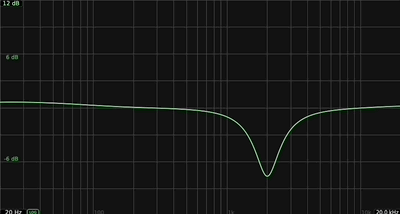 A parametric equalizer is a versatile audio processing tool that controls each EQ band completely.
A parametric equalizer is a versatile audio processing tool that controls each EQ band completely.
Unlike graphic equalizers, which offer fixed frequency bands with predetermined bandwidth and gain settings, a parametric EQ allows users to adjust these parameters independently for each band. One critical parameter that dictates the behavior of an EQ band is the Quality Factor, commonly known as Q.
But what is it, and how should it be used?
Let’s look closer and learn how understanding the Q factor can help us to achieve our desired tonal characteristics and avoid unintended consequences whilst audio processing.
What is the Q factor?
The Q factor, or Quality Factor, defines the bandwidth of an EQ band and influences how selectively or broadly it affects frequencies around the center frequency. In simpler terms, it determines the sharpness or width of the EQ curve. Every time we boost or attenuate a frequency, we affect a certain range centered around that specific frequency. The Q factor controls the width of this range.
The Q factor is calculated by dividing the center frequency value by the affected frequency range. For example, if we are boosting or cutting at 1kHz and the range of frequencies affected is +/- 600 Hz, the Q value will be 0.83.
Q=BandwidthCentre Frequency
0.83 =1000 Hz (1600 Hz -400 Hz)
How to use it?
Different Q values should be applied depending on how we want to affect our audio sources.
A low-Q band affects a broad range of frequencies, making it suitable for gentle shaping or broad corrections. On the other hand, a high-Q band targets a narrower range, which is ideal for surgical adjustments, removing unwanted resonances, or accentuating problematic frequencies.
While most EQs tend to use broader Q values for their bands due to their musicality, higher Q values are commonly used to cut and tame specific ringing frequencies. This is especially useful when equalizing snare sounds and eliminating annoying resonances. Just be careful when applying these kinds of curves, because if overused, they can cause phase issues, making your audio sound thin and unfocused. Soon, you’ll end up with more problems than solutions.
Where do we find it?
While the bandwidth parameter can be found in many types of equalizers, as we mentioned at the beginning of the article, not every EQ provides this type of control. Most Sonimus EQ plugins, like the SonEQ family or A-EQ, provide a switch to flip between a broad and Hi-Q value for the mid-bands. This allows you to move between musical and surgical EQ curves.
But sometimes, you need to be more precise in your EQ moves. That’s where a fully parametric SSL-style EQ like StonEQ 4K comes into play. Using the bandwidth knob in the two mid bands of StonEQ 4K, you can fully customize the shape of your curves. This is especially helpful for finding a ringing frequency. Increase the value of Q so a sharp notch can be created, and boost or cut by 6 dB, and start sweeping the band until you find the frequency bothering your mix. Then, you can dial the right shape and level for that frequency to fit perfectly into the production.
The Quality Factor (Q) is a fundamental parameter that underpins the functionality and effectiveness of equalizer bands.
If you want to learn more about how to get the most out of your equalizers, as well as being the first to know about our new products, useful tips, tutorials and guides, subscribe to our newsletter and follow Sonimus on social media.
Comment below and follow Sonimus socials for more reviews, tips and tutorials.









Leave A Comment
You must be logged in to post a comment.